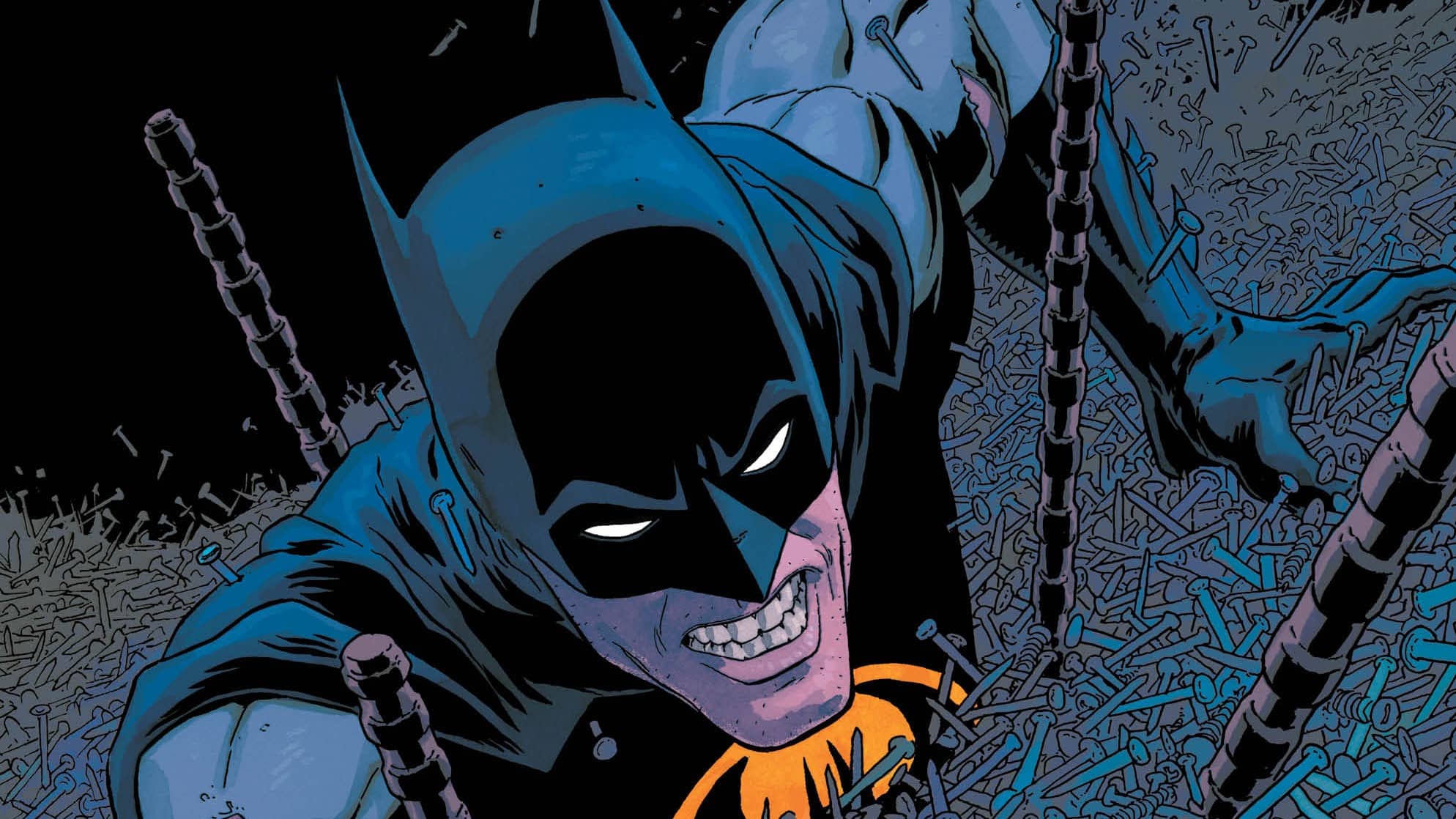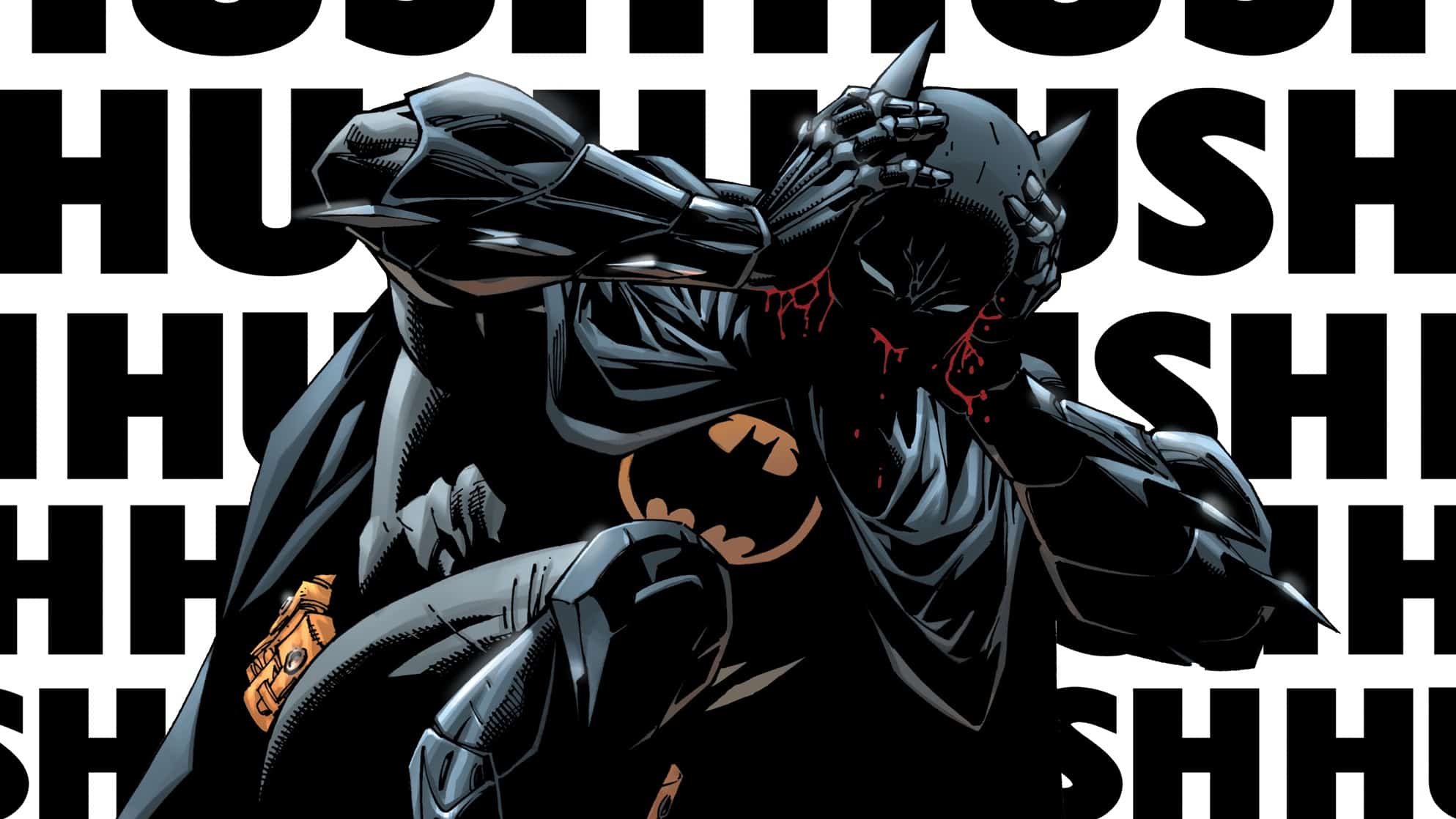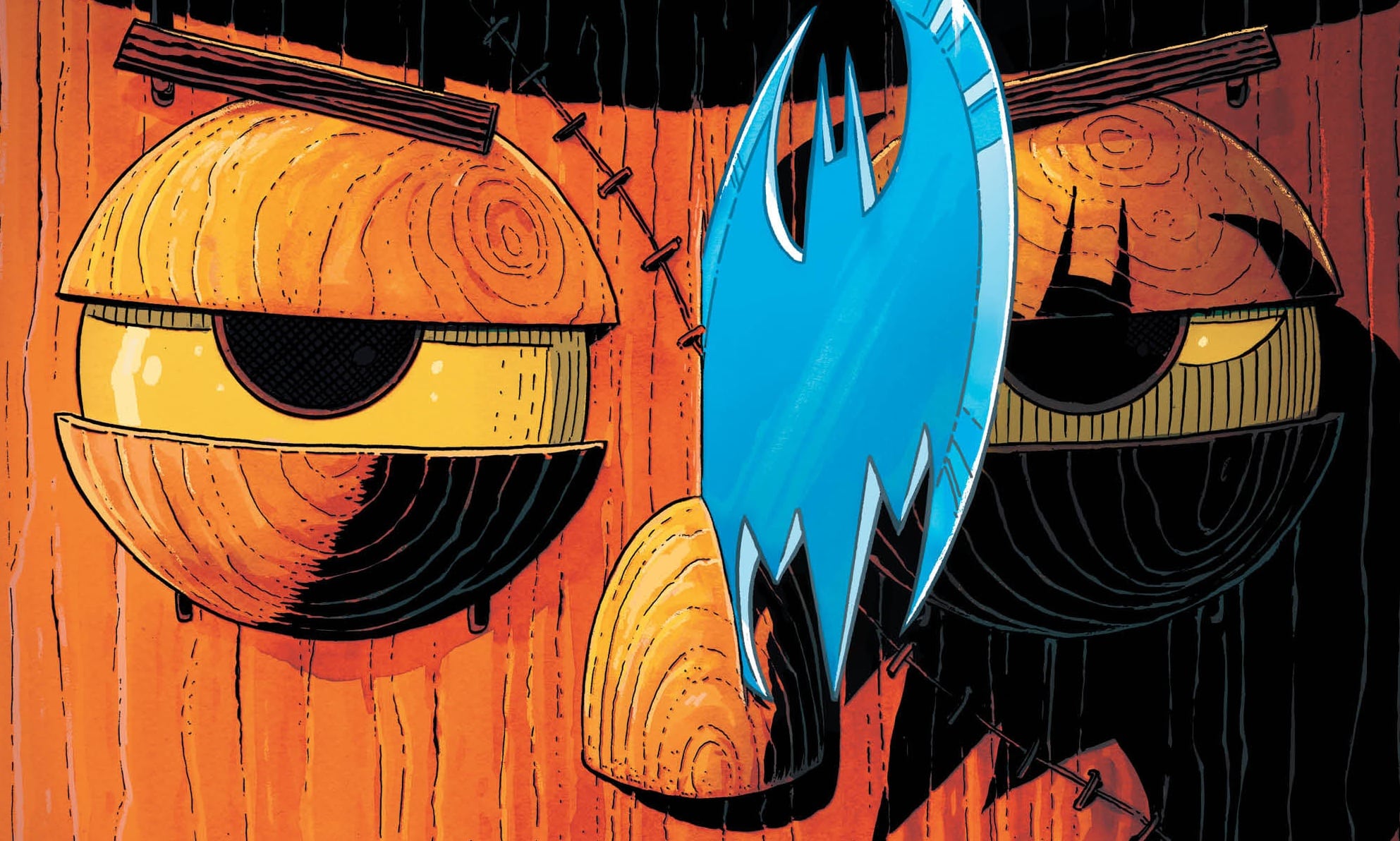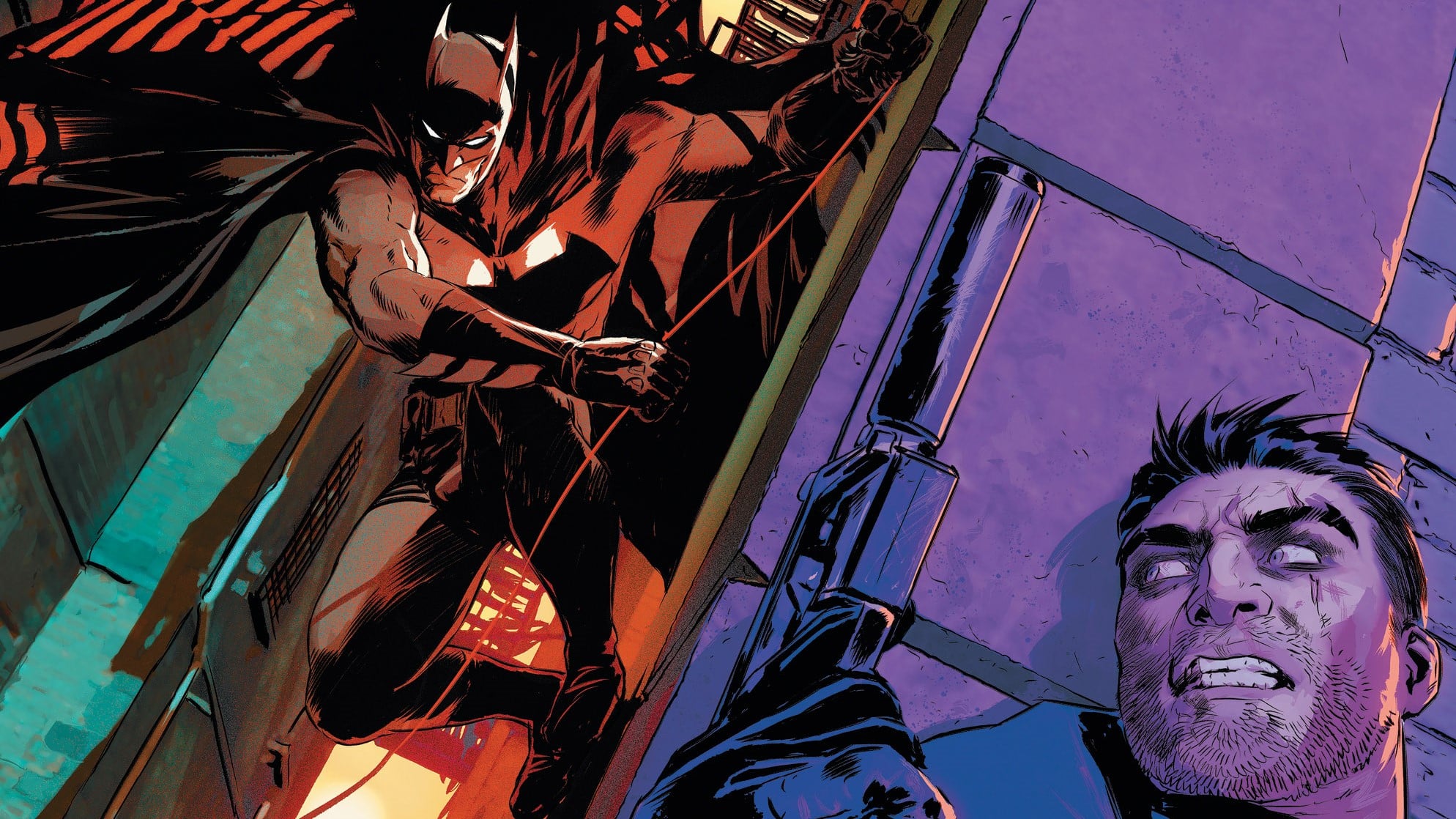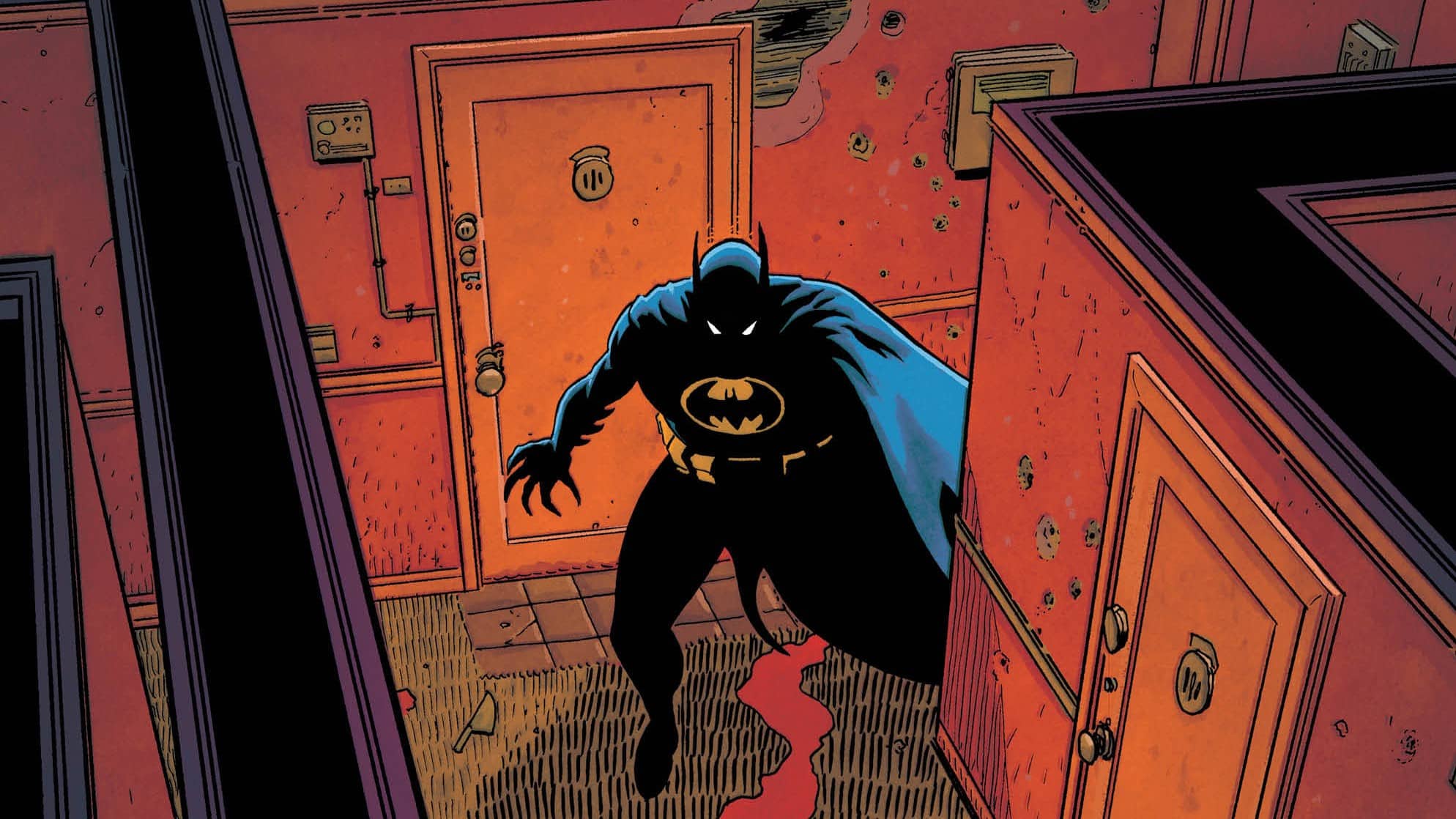The case of the Wound Man comes to a close. Batman follows his trail to his secret past, as the Wound Man runs afoul of a family noted for its bad intentions. Batman: Dark Patterns #3 is written by Dan Watters, drawn by Hayden Sherman, colored by Triona Farrell and lettered by Frank Cvetkovic.
Will Nevin: Look, I understand the listicle web content game as much as the next guy — and this certainly worked for CBR since this was on Google News — but under no circumstances does “One Bad Day: The Riddler” belong on a list of the best Batman one-shots. I don’t give a damn what the Eisners said. That story is trash.
Matt Lazorwitz: I would love to know what else is on that list, but I’d rather not give it the clicks. But yes, that is the kind of answer someone gives who values shock and formalism over story. That book is “mature” in the worst ways: needlessly violent and overwritten.
Will: I done clicked it, so here’s what they threw together: No. 5, Batman #251: “Joker’s Five-Way Revenge”; No. 4, dog shit; No. 3, Detective Comics #826: “Slayride”; No. 2, Batman #423: “You Shoulda Seen Him”; No. 1, Batman #51: “Gotham Is.”
One of those things is not like the other. One of those things just doesn’t belong.
Matt: I mean, I like “Slayride” a lot, but that’s really a Tim Drake story. I guess we should probably cover Batman #51 on the podcast soon, huh?
Will: A very special “end of” episode. Last arcs. Last calls. Last appearances.
Batman in the ’Burbs

Will: We’ve had different neighborhoods referenced before in other stories and used to highlight the perpetual class warfare in Gotham, but this seems like one of the few — perhaps only — to bring the suburbs into it. White flight, it seems, exists everywhere.
Matt: It does, but this is Gotham, so things are worse than they are even in the real world. Or at least as bad as they are in the worst cases. Because the only thing worse than finding you’re living over an Indigenous burial ground is that you’re living over a site where nerve agents were dumped. But people are shockingly adaptable, huh? In the worst possible ways, in many cases.
Will: And this all really started in the last issue, of course. I don’t know what I was reading — some social media blurb, or another review, or, hell, it might have even been you — talking about the decision to place Batman — the creature of the night — in the suburbs. And it’s such a stark contrast, just ludicrous in the best way, like seeing the Batmobile parked in front of the proverbial (well, literal) white picket fence. But then we see that all is not well. The former doctor’s former home is in shambles … and the local suburbanites have seen better days.
And so much of that is shown in the artwork. The brilliant green highlighting the landscape. The sickly colors on the crowd that sets upon Batman. Once again, this is a book where everything is working in concert.
Matt: The townsfolk are costumed in a way that looks a bit on the antiquated side, a bit Norman Rockwell: the suit with the hat, the overalls, the sweater. But not so antiquated that it looks completely out of place if this story were set now. It actually reminds me of the costumes and tech from Batman: The Animated Series; it exists in a nebulous time that makes it feel timeless in a way.
But the scene progresses from something bucolic with darkness bubbling underneath into something very dark. These people say they would rather live here, where they literally feel nothing thanks to the poison in their water, than return to the city, and they will defend this way of life by beating to death a man who wants to help them.
Will: And boy howdy, does that ever feel deep and prescient, the idea that people are willing to fight for a thing that is killing them, turning them into literal monsters.
Matt: And are only stopped by someone shaming them. Not stopping because it’s the right thing to do and having some epiphany, but instead stopping because someone calls them on their actions. Wouldn’t it be great if someone was actually willing to call out real evil and not try to both-sides it in the real world? We have to read comic books to see someone stand up.
Will: Christ, this is what passes for escapism now, doesn’t it? I know this reveal comes later in the story, but since it happened in Green Fields, I’ll mention it now: The page in which the doctor transforms into the Wound Man? That might be one of the most stunning pages I’ve seen in a long time — the use of color and diminishing panels to represent madness was incredible.
Matt: The still panels and pages of a comic can at times have a hard time representing pain and terror; you get to see the after effects of an injury, or the receiving of it, but without the whole sequence, it doesn’t always hit. This? The pain felt like it was bleeding off the page, even if the Wound Man himself was not feeling it.
The Wound Man in Gotham

Matt: So, while Batman is dealing with Green Fields, we have the Wound Man making his next kill and then being taken by Sionis. The scenes with the Wound Man tied up while Sionis talks to him have that classic feel we often get in fiction, with the question of which two of these people is the real monster, huh?
Will: I’m sure it’s no accident that Sionis bears more than a little resemblance to Al Capone. One of the great things about this story so far is that Watters has been able to include little details that might be hints as to what’s coming or simply flavor for his larger Gotham. Is nutty little Roman going to pop up after he runs the family cosmetics business into the ground? Will we actually see the Ten-Eyed Man in the next arc after he was mentioned in the narration? I don’t feel like those are promises or assurances, and I feel like I won’t be disappointed at all in what happens next, but it’s refreshing to see connections to a wider world without feeling like I’m being beaten in the head with the continuity stick.
Matt: Absolutely correct. Even if we don’t get Roman, by seeing his father, we now get a better idea of exactly how Roman turned out the way he did. And Ten-Eyed Man is a favorite of Watters, since he’s written him both in Arkham City and in backups in Detective, so I feel like he’s sort of Watters’ trademark Batman character, so that nod feels just right.
The sheer sadism of Sionis makes him utterly repugnant. This guy could have had his goons just kill Wound Man, but no, he had to have him brought before him so he can do it himself. He wasn’t looking to get anything from him, or deliver an ultimatum. He just wanted to deliver the killing blow himself. Yeah, like father, like son.
Will: And here’s another question that we’ve already chewed over: To what extent do these characters pop up in the rest of the series? We got a little more of the medical examiner — basically a status update — so I feel safe in thinking he’s going to show up again. But it feels like it could go either way for the Wound Man — the natural end of his story or the beginning of his recovery. Man, there just aren’t enough pages for this book and the stories it could tell.
Matt: I think we’ll have to see. I definitely think the coroner, who popped up a couple times, is going to be back. Maybe he’ll be the connective tissue between arcs?
The ending of this issue is one of those ones that straddles some questions about Batman’s behavior. We know Batman has The One Rule: You can’t kill. But here he basically gives Sionis a lifelong, debilitating injury. Where do you stand on that? I admit a visceral satisfaction to seeing a conceited, rich sadist get a taste of his own medicine.
Will: We both find that a Batman who uses violence indiscriminately (the “Punisher ass Batman”) is distasteful. But this is an exceptionally calculated move that works to serve the narrative. The Wound Man — our villain turned victim — cannot feel anything. At the end of this arc, the man responsible for his condition will now deal with shoulder pain for what Batman assumes will be the rest of his life. A Frank Miller Batman would simply break a bone and be done with it. But this is much more cerebral and a great conclusion for this story.
Tl; dr: I loved it.
Bat-miscellany
- This week’s BatChat podcast features Neal Adams art: two classic stories from Denny O’Neil and Adams, and then Adams’ completely insane opus Batman: Odyssey. See how close it drives Matt, Will and guest Matt McThorn to the precipice of madness.
Buy Batman: Dark Patterns #3 here. (Disclaimer: As an Amazon Associate, ComicsXF may earn from qualifying purchases.)

